|
Summer at Grazer Kunstverein
7 June – 3 August 2018
Nadia Belerique
On Sleep Stones
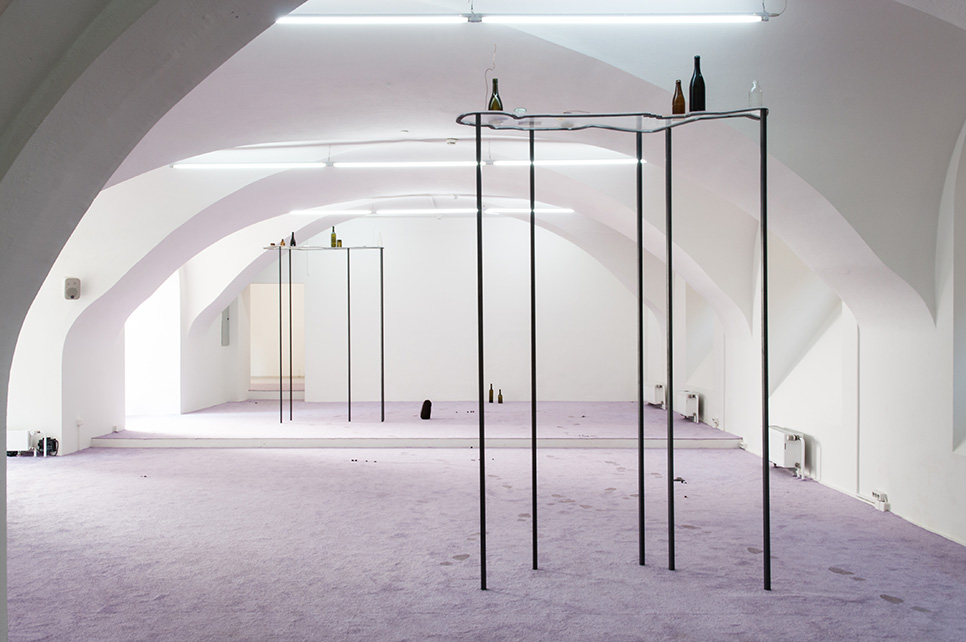
Nadia Belerique, installation view of On Sleep Stones, Summer 2018, Grazer Kunstverein. Photography by Christine Winkler
“Camille Claudel lived the last thirty years of her life in an asylum, wondering why, writing letters to her brother the poet, who had signed the papers. Come visit me, she says. Remember, I am living here with madwomen; days are long. She did not smoke or stroll. She refused to sculpt. Althought they gave her sleep stones – marble and granite and porphyry – she broke them, then collected the pieces and buried these outside the walls at night. Night was when her hands grew, huger and huger until in the photograph they are like two parts of someone else loaded onto her knees.”
Anne Carson
“Short Talks On Sleep Stones”
Excerpt from Short Talks
Brick Books Classics first edition, 2015
Originally published 1992
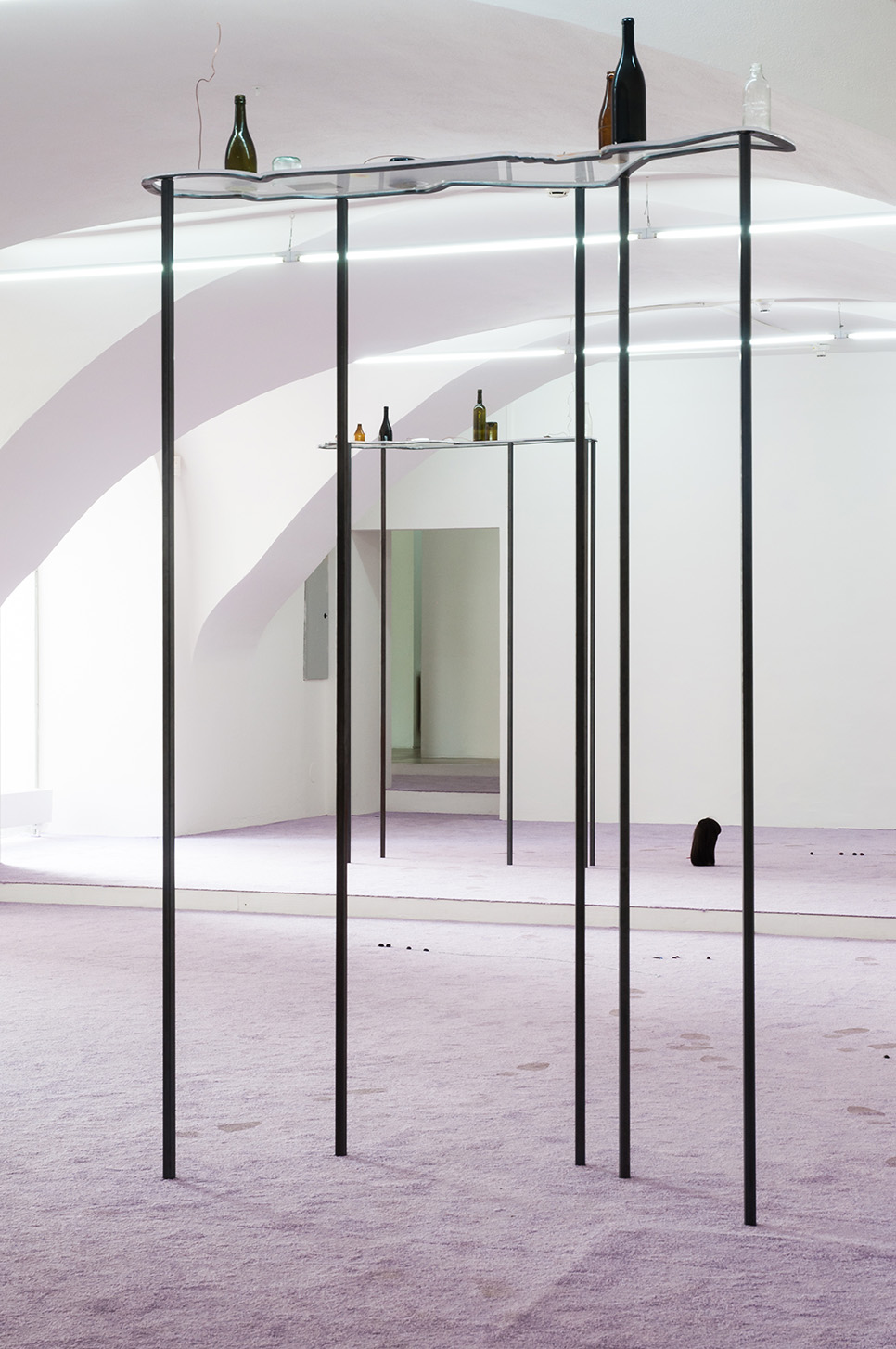
Nadia Belerique, installation view of On Sleep Stones, Summer 2018, Grazer Kunstverein. Photography by Christine Winkler
Nadia Belerique is an artist who applies the logic of photography to sculptural installation. Mining her knowledge of photographic processes she assembles images, objects and sculptures into compositions that act almost like portraits of absent protagonists. She creates narratives by layering physical evidence. She leaves clues in her materials. The readymades she incorporates are chosen with intention and intuition. They are objects that are made for domestic use, for touching by hand or grasping with fingers; bottles, glasses, light cords, pull-chains, curtain strings.
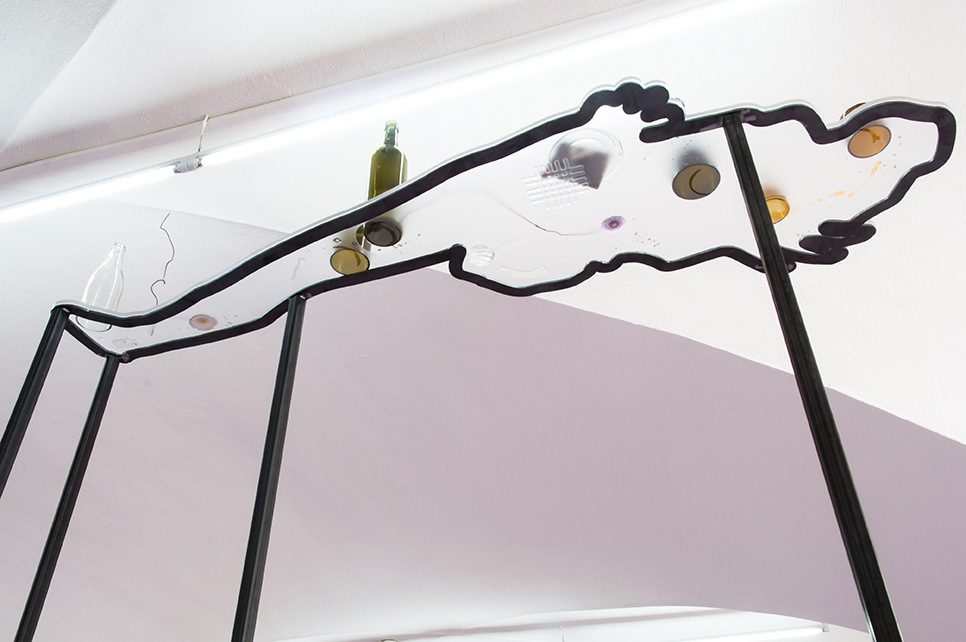
Nadia Belerique, detail view of On Sleep Stones, Summer 2018, Grazer Kunstverein. Photography by Christine Winkler
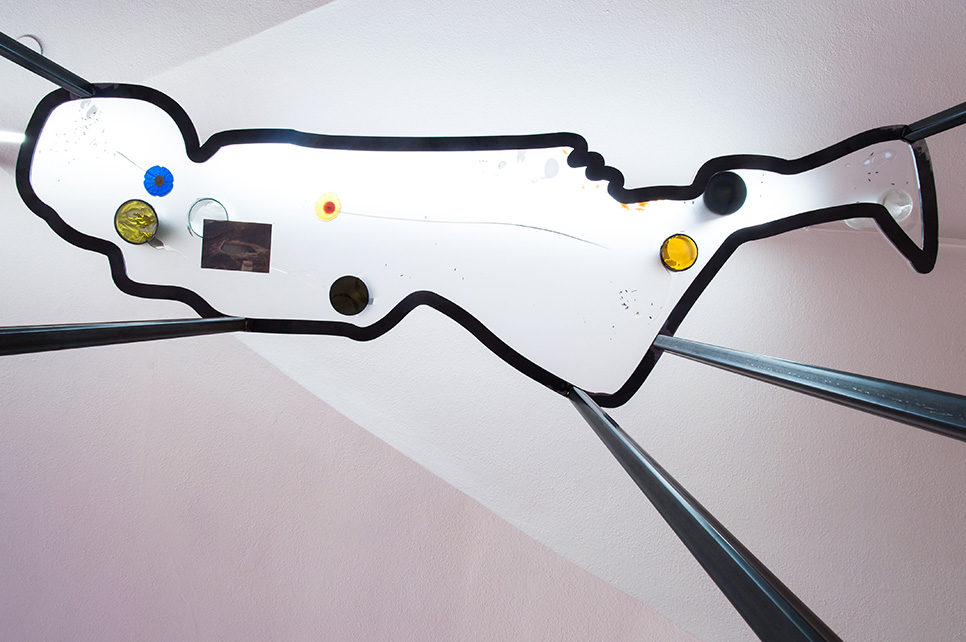
Nadia Belerique, detail view of On Sleep Stones, Summer 2018, Grazer Kunstverein. Photography by Christine Winkler
Belerique also works with handicrafts and found images. This glass heart (half pink/half purple), that decorative flower on a tall thin stem, this caterpillar sticker from a lost collection, that abandoned photograph from a friend’s basement. Assembling the elements involves a process of intense thinking and looking. Carpet is laid, steel is shaped, glass is cut, before collected objects are brought into play. Once gathered, Belerique stains these with the residue of everyday life to capture leakages that infer the passage of time. Water rings, spillages, puddles of shadows, footprints, droplets, imprints and impressions left by weight. In these markings a kind of memory bank is channeled through objects. An open collection of possible scenarios. Misremembered histories. Secrets. Like a crime scene, it’s tricky to tell what really happened. Was there a fight, a dance, a love affair, a death? In reality these ordeals have existed only in imaginations, or at least, not attached to fact. But if, as the one-time psychotherapist of Yvonne Rainer suggests, “feelings are facts”, then the occurrence of perceived events is as real as shadows of their absence.

Nadia Belerique, detail view of On Sleep Stones, Summer 2018, Grazer Kunstverein. Photography by Christine Winkler
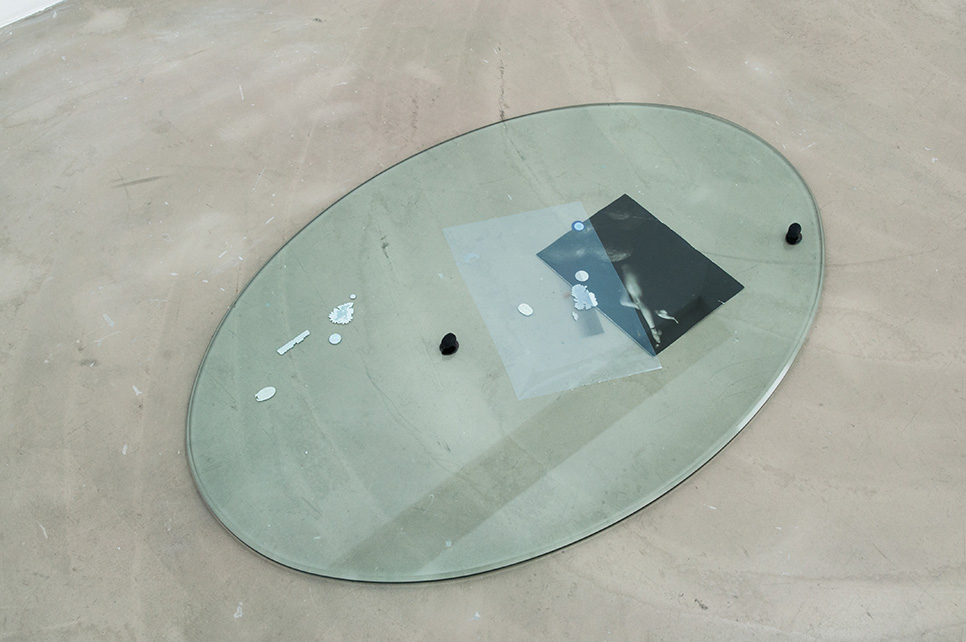
Nadia Belerique, detail view of On Sleep Stones, Summer 2018, Grazer Kunstverein. Photography by Christine Winkler
The title of the exhibition is drawn from a prose poem by Canadian author Anne Carson, from her book Short Talks (originally published in 1992). “Short Talk On Sleep Stones” ruminates on the last thirty years in the life of French Sculptor Camille Claudel, a former pupil and lover of Auguste Rodin. Claudel was committed to a psychiatric institution by her family, where she remained until her death. Carson’s poignant prose piece On Sleep Stones reappeared later in Plainwater, a book that has had major importance for Belerique in thinking about the anthropology of water, the mechanics of walking, and the possibility of a verbal photograph. Belerique’s ensuing installation haptically links psychic and physical space, engaging with the complex nature of time, visibility and memory through liquid light and plush fibres, while questioning the shadowy role of images and their performativity in contemporary culture.

Nadia Belerique, detail view of On Sleep Stones, Summer 2018, Grazer Kunstverein. Photography by Christine Winkler
Nadia Belerique (b. 1982, Canada) is an artist based in Toronto, Canada. Her approach to sculptural practice is informed by her background in photography. Nadia Belerique is represented by Daniel Faria Gallery, Toronto, and has shown internationally at venues such as Oakville Galleries, Gwangju Biennale, Tensta Konsthall and The Powerplant. Her residency at Grazer Kunstverein is supported by Canada Council for the Arts.
https://www.nadiabelerique.com
Nadia Belerique’s summer residency and production of new work is kindly supported by Canada Council for the Arts.
Christian Nyampeta
Words After the World

Christian Nyampeta, installation view of Words After the World, Summer 2018, Grazer Kunstverein. Photography by Christine Winkler
Words After the World is the title of a film made by Christian Nyampeta. Shot in London, UK, and Nyanza, Rwanda, in cooperation with the staff and students of Igihoza St Peter Secondary School, the film follows a writer trying to tell a story at a time when certain undisclosed words are prohibited.
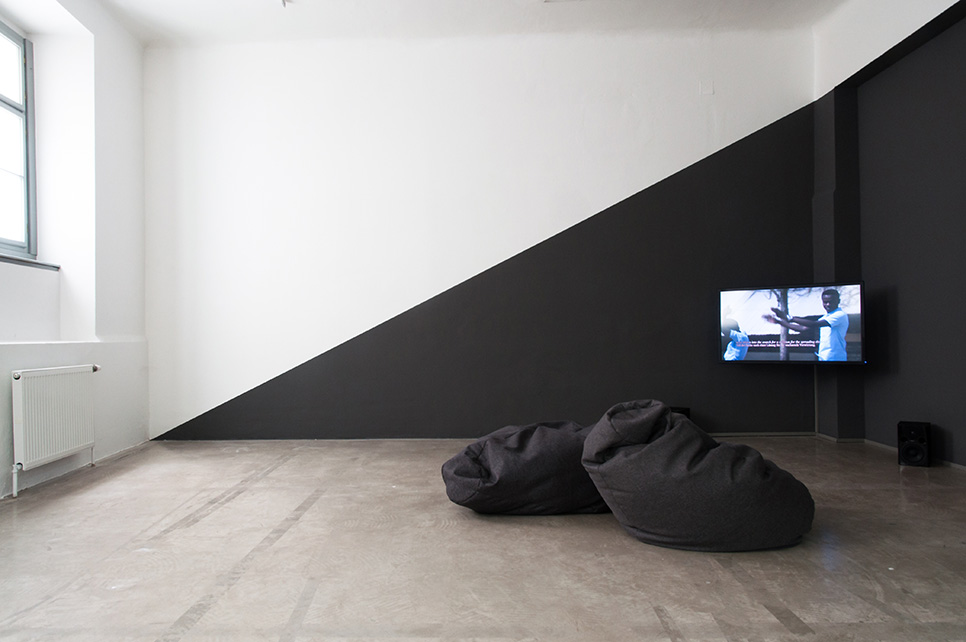
Christian Nyampeta, installation view of Words After the World, Summer 2018, Grazer Kunstverein. Photography by Christine Winkler
The narrator describes a fictional scenario in a boarding school where elites or athletes meet every morning for training. Gradually this drains their energy, with increased workloads leading to exhaustion. The athletes complain to their superiors and request change. It is decided from that moment on, that not only athletes must train every morning – but that every student in the school is subject to the prestigious but demanding regime. Gradually dissent grows amongst the students, who spread the unrest throughout the neighbouring area, leading to retaliation.

Christian Nyampeta, installation view of Words After the World, Summer 2018, Grazer Kunstverein. Photography by Christine Winkler
Throughout the film, Nyampeta asks: how can we tell a story, explain or communicate our needs or opinions, when certain words are restricted or forbidden? What are the missing words? What is the hidden story? What remains when one’s own words and sense of meaning become invalid? In what ways can meaning be reclaimed to express that which needs to be said? This work was a collaborative exercise for Nyampeta, who describes it as ‘a film in progress’. Towards the end of the film the narrator/writer resorts to attempting communications with notable African philosophers Alexis Kagame and Maniragaba Balibutsa. This attempt at understanding, at reaching for the wisdom contained in often inaccessible writing, is reproduced in Nyampeta’s own practice, as he actively reads and translates and unlocks meaning attached to the words of others.
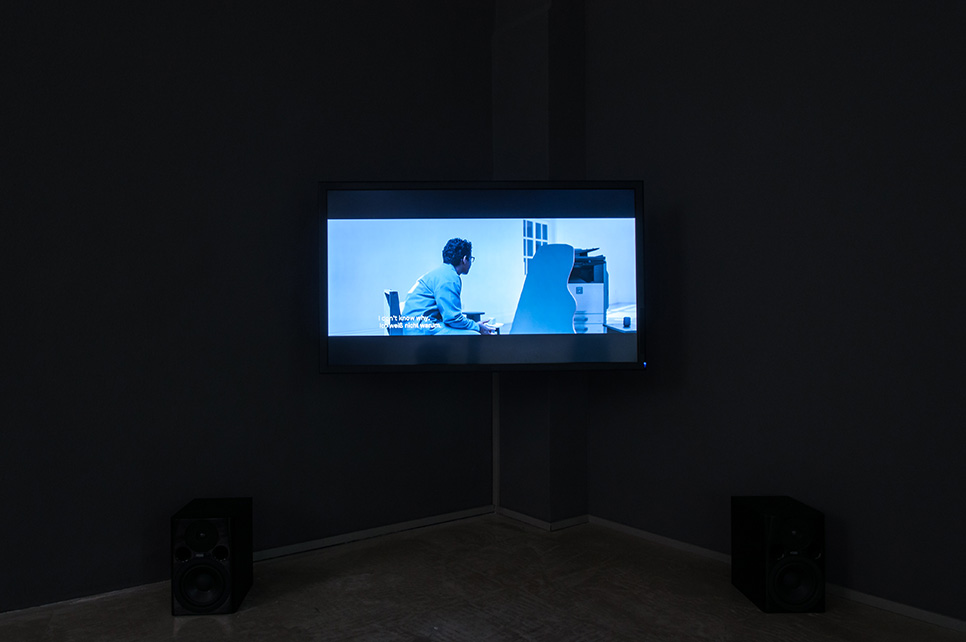
Christian Nyampeta, installation view of Words After the World, Summer 2018, Grazer Kunstverein. Photography by Christine Winkler
Both the film and wider translation project follow a circular, performative logic that Nyampeta uses to desediment language and meaning through engendering its active discourse. As part of the exhibition Words After the World a working translation group is being hosted to actively and collectively translate Francophone texts into German, for the first time. Beginning with Bourahima Ouattara’s Fragmented Africa, participants meet regularly and read together, with the aim of collectively interpreting and communicating the content of the text in the context of Nyampeta’s wider project. Words After the World is a film by Christian Nyampeta featuring Taylor Le Melle in dialogue with Maniragaba Balibutsa and Abbé Alexis Kagame, realised in co-operation with staff and students of Igihozo St Peter Secondary School. It was originally commissioned by Camden Arts Centre, supported by Mondriaan Fonds and The Embassy of the Kingdom of the Netherlands. The German translation for its presentation at Grazer Kunstverein was carried out by Dörte Elias. The core participants of the Graz based translation working group are Marie-Céline Aimetti, Sylvie Brunelle, Victoria Dejaco, Fiston Mwanza Mujila, Shivi Shrivastava and Jennifer Weiss.
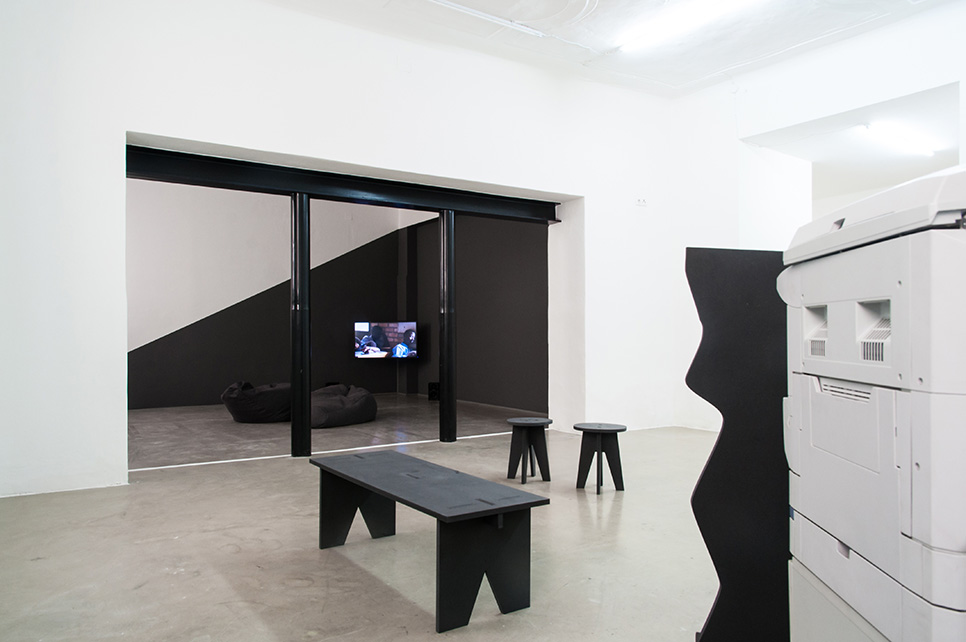
Christian Nyampeta, installation view of Words After the World, Summer 2018, Grazer Kunstverein. Photography by Christine Winkler
Christian Nyampeta (b. 1981, Rwanda) is an artist based in New York, USA. He works across art, design and theory to interrogate ways of living together and to explore the complexities of being in common. Currently preoccupied with the notion of ‘thinking’ and ‘writing’ Africa today, Nyampeta’s recent, ongoing and forthcoming presentations, exhibitions and contributions take place in Dakar, Philadelphia, Vancouver, Lesotho Kigali, and Stockholm.
http://www.christiannyampeta.com
Cesare Pietroiusti
Non-Functional Thoughts
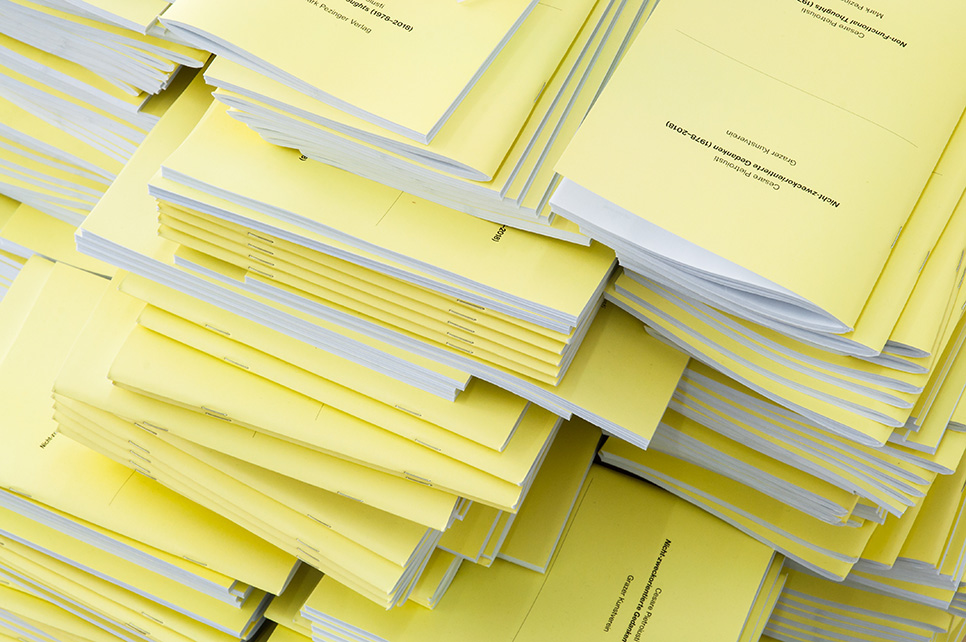
Cesare Pietroiusti, installation view of Non-Functional Thoughts, Summer 2018, Grazer Kunstverein. Photography by Christine Winkler
Cesare Pietroiusti began his career in psychiatry in 1979. His earlier works as an artist were concerned with social psychology in relation to art and arts practice. His work progressed conceptually into social and relational projects that often focus on problematic and paradoxical situations that are hidden in common relationships and ordinary acts. He is especially interested in that which comes to mind without reason, arbitrary irritations, minor fixations and mental preoccupations. These are usually seen as lacking in significance for prolonged examination, but Pietroiusti has chosen to put them under the microscope with projects like Non-Functional Thoughts.
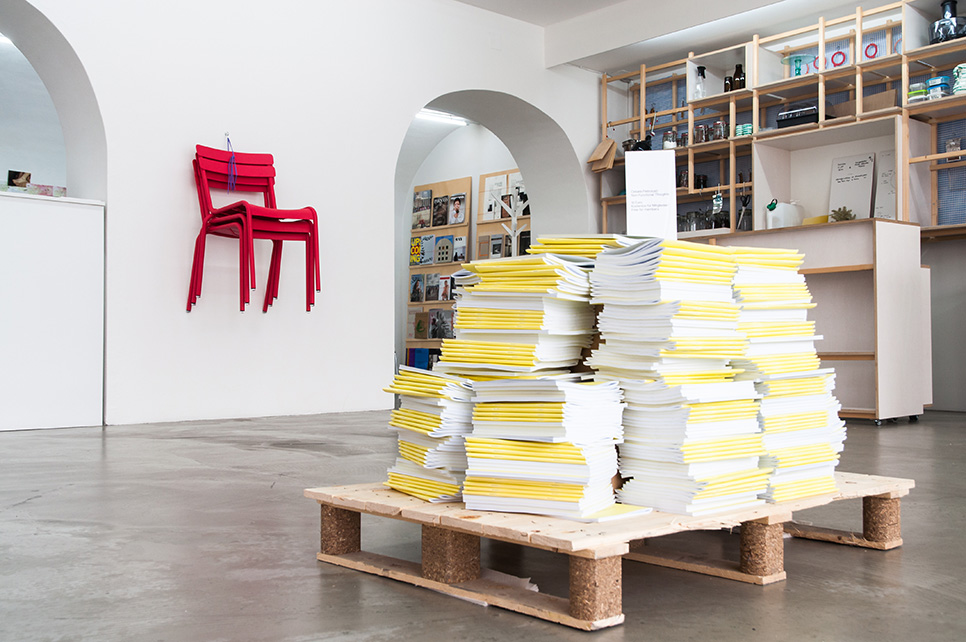
Cesare Pietroiusti, installation view of Non-Functional Thoughts, Summer 2018, Grazer Kunstverein. Photography by Christine Winkler
This much-loved instructional handbook in off-kilter thinking was originally published in 1997 and is today over forty years in the making. It contains a litany of actions or suggestions that vary from the mundane to the puzzling, from the comical to the melancholic. Some of them have been realised by the artist as performances or art projects, some simply exist as thought experiments, ready to be put into action by anyone. At a time when art is becoming increasingly instrumentalised, when people are being categorized and divided through polarising forces, Non-Functional Thoughts serves as a timely instructional pamphlet on how to reconnect with individuals, from a perspective that is playful, critical, and in danger of disappearing. Grazer Kunstverein is proud to publish the first bi-lingual German-English edition of Non-Functional Thoughts, in collaboration with Mark Pezinger Verlag.
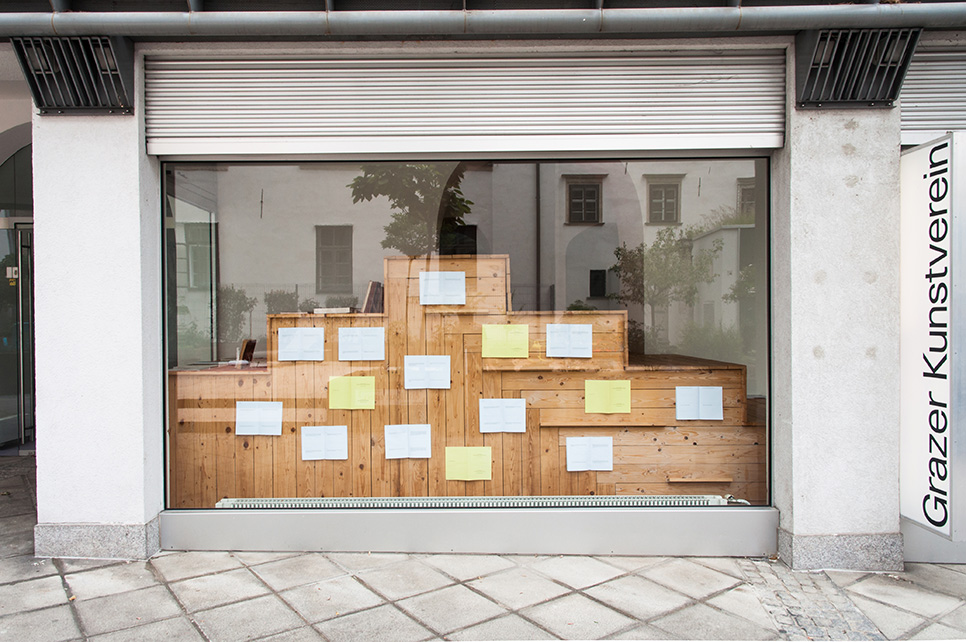
Cesare Pietroiusti, installation view of Non-Functional Thoughts, Summer 2018, Grazer Kunstverein. Photography by Christine Winkler
To mark its official launch the artist will conduct a five-day workshop from 2–6 July, to explore ways of activating the contents of the publication. Workshop participants will undertake a series of micro conceptual art projects using everyday objects, practices, props and people. At the invitation of Austrian artist Alfredo Barsuglia, the workshop culminates in a performance-based presentation in Fürstenfeld on Friday 6 July, as part of Mariainsel – Wasser Biennale Fürstenfeld 2018.

Cesare Pietroiusti, Non-Functional Thoughts installed as part of Mariainsel at Wasser Biennale Fürstenfeld, Summer 2018. Photography by Alfredo Barsuglia
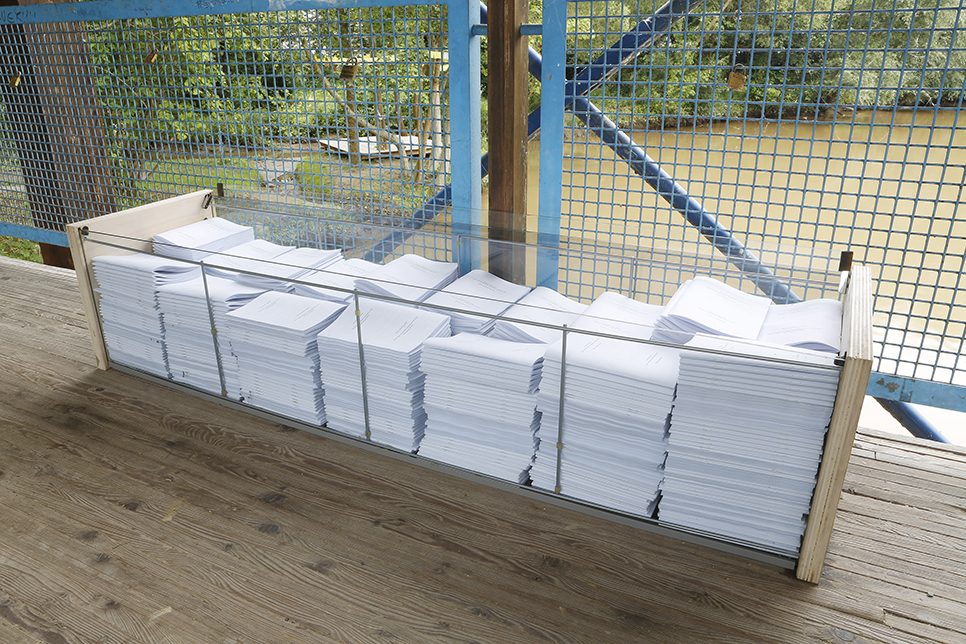
Cesare Pietroiusti, Non-Functional Thoughts installed as part of Mariainsel at Wasser Biennale Fürstenfeld, Summer 2018. Photography by Alfredo Barsuglia
Cesare Pietroiusti (b. 1955, Italy) is an artist based in Rome, Italy. His background in psychology and interest in economics have informed his approach to art making. He has exhibited his work widely across Europe and the United States of America, including exhibitions at Art in General, New York; Ikon Gallery, Birmingham; Athens Biennial; MAZZI, Rome; Moscow Museum of Modern Art; Fondazione Sandretto Re Rebaudengo, Turin; Bozar, Brussels; Hayward Gallery, London, and most recently Fondazione Morra, Naples.
http://www.nonfunctionalthoughts.net
Triple Candie
If Michael Asher part II

Triple Candie, installation view of If Michael Asher part II, year-long research project, Summer 2018, Grazer Kunstverein. Photography by Christine Winkler
Part II of Triple Candie’s engagement with Grazer Kunstverein (on view 7 June – 3 August 2018) focused on the issue of value by looking at the relationship between Grazer Kunstverein and a newly adjacent patio-furniture business, Chillout Area. This resulted in display of some of Chillout Area's furniture in the reception area of Grazer Kunstverein, accompanied by the following process note:
Grazer Kunstverein is not visible from the street. To gain access to it, visitors must leave the street, step through a covered passageway sandwiched between two visual arts venues, proceed past a small open-air court, then through a second covered passageway, before arriving at a large central plaza, lined by the Grazer Kunstverein’s eight, floor-to-ceiling plate-glass windows on one side. The center of the plaza is occupied by a recently built, raised, landscaped terrace that showcases patio and garden furniture from an adjacent business. The Grazer Kunstverein’s displays are visible from the terrace, and the patio furniture is visible from the gallery. We are interested in the relationship between these two premises.
We propose that from 7 June to 3 August the Grazer Kunstverein collaborate with the garden furniture store to borrow and exhibit six Fermob Luxembourg chairs in its reception area. We request that the chairs be hung from purple strings on the wall in groups of three, following a storage recommendation from the manufacturer. In this way there are no aesthetic decisions imposed on the display by either gallery staff or ourselves. We further propose that during this period no Fermob Luxembourg chairs are to be displayed on the outdoor terrace, requiring clients of the garden furniture business to enter the Grazer Kunstverein to see them.
Note: The six Luxembourg chairs referenced in the above text were sold and removed by the lender two weeks before the project ended. They were subsequently replaced with four new cafe chairs instead.

Triple Candie, installation view of If Michael Asher part II, year-long research project, Summer 2018, Grazer Kunstverein. Photography by Christine Winkler
Triple Candie is a US-based, avant-garde curatorial production agency that collaborates with museums and contemporary art spaces on exhibitions about art but generally devoid of it. From 2001 to 2010, it had a gallery in Harlem. Since then, it has presented projects in Australia, Europe, and the United States at such venues as Chateau Shatto, Los Angeles; Deste Foundation, Athens; Gertrude Contemporary, Melbourne; Museum of Contemporary Art Detroit; Project Arts Centre, Dublin; and Utah Museum of Contemporary Art, Salt Lake City. Surveys of Triple Candie’s work have appeared at FRAC Île-de-France/ Le Plateau, Paris (2012) and Addison Gallery of American Art, Andover, Massachusetts (2017).
http://www.triplecandie.org
|
![]()
![]()